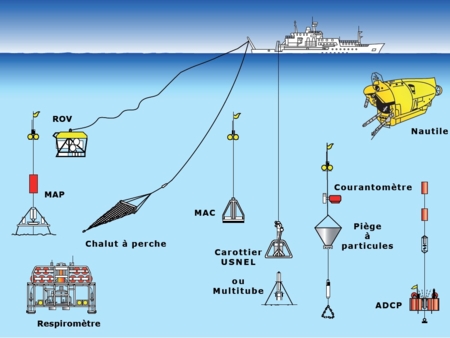Influence of hydrothermal vent activity and substratum types on faunal colonization processes in the deep sea
Four decades after their discovery, we know now that deep-sea hydrothermal vents are widespread, diverse and dynamic, and interact with other chemosynthetic-based and background ecosystems. In the face of potential imminent anthropogenic impacts, more than ever the understanding of the processes that shape vent biodiversity, in its multiple facets, and the interactions with other systems is of paramount importance. The early processes driving community assembly and interactions between hydrothermally active habitats, vent periphery and cognate communities, namely wood falls, were investigated with an extensive colonizing experiment at 1700 m depth on the Lucky Strike vent field (northern Mid-Atlantic Ridge). A modern multifaceted framework of community assembly based on species richness, functional traits and stable isotopes was applied. Results showed that vent ecosystems support higher functional richness than background peripheral habitats. The latter were highly heterogeneous and unique in species and functions suggesting that they may be especially vulnerable to impacts, such as deep-sea mining. The observed faunal overlap and energy links suggest that rather than being separate entities, active and peripheral habitats may be considered as interconnected. Environmental conditions and the presence of different resources at vent, periphery and wood habitats, were identified as main drivers of biodiversity patterns and community structure. The role of woods in the deep-sea as potential stepping stones for meio- and macrofauna, not only for “vent” but for periphery inhabitants, is validated. The results of this thesis significantly improve our understanding of vent and chemosynthetic communities and may have implications for their protection from industrial activities.







